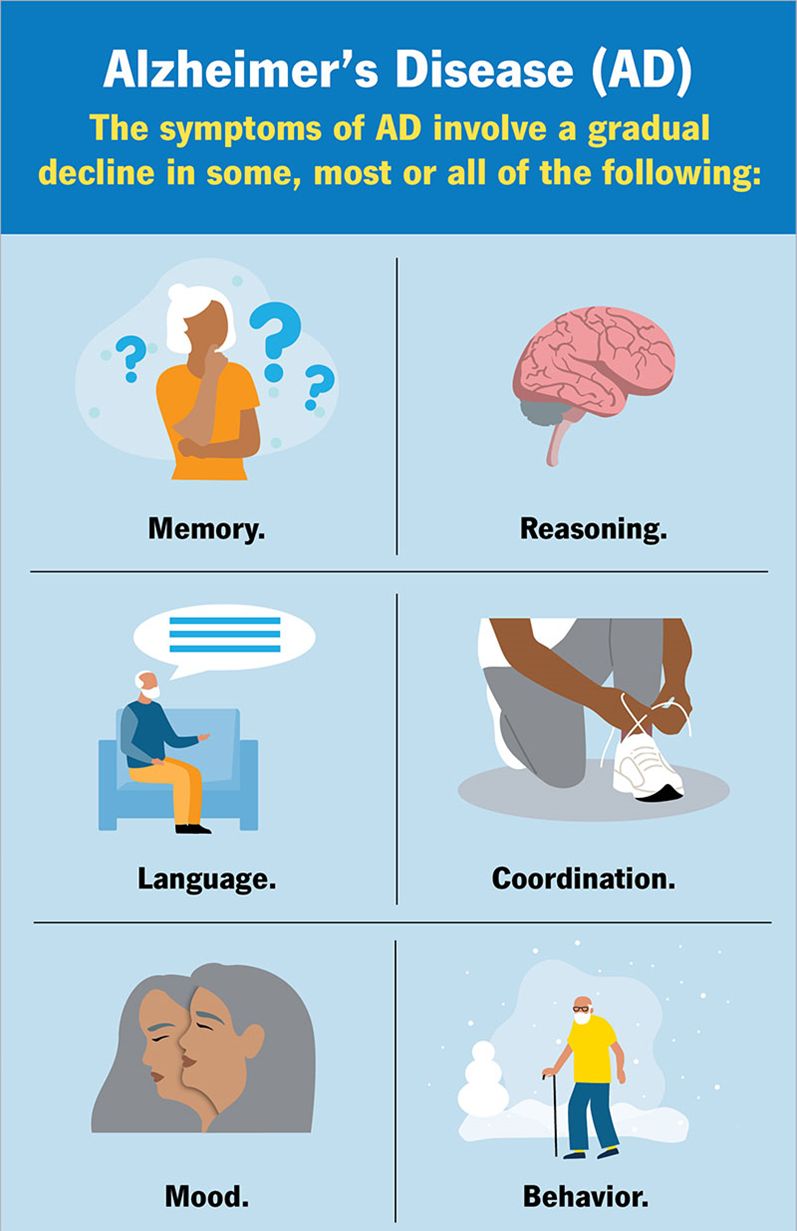A patient with mild Alzheimer’s disease is prescribed to take galantamine. Which statement best describes how this medication works to treat this disease?
Prevents the breakdown of acetylcholine.
Decreases amyloid plaques in the brain.
Increases acetylcholine levels in the brain.
Limits neurotransmitter engagement of NMDA receptors
The Correct Answer is A
Choice A Reason:
Prevents the breakdown of acetylcholine.
Galantamine is an acetylcholinesterase inhibitor, which means it works by preventing the breakdown of acetylcholine in the brain. Acetylcholine is a neurotransmitter that is important for memory and learning. By inhibiting the enzyme that breaks down acetylcholine, galantamine increases the levels of acetylcholine available in the brain, which can help improve cognitive function in patients with Alzheimer’s disease1. This mechanism of action is crucial because it directly addresses the cholinergic deficit observed in Alzheimer’s disease.

Choice B Reason:
Decreases amyloid plaques in the brain.
This statement is incorrect. Galantamine does not work by decreasing amyloid plaques in the brain. Amyloid plaques are one of the pathological hallmarks of Alzheimer’s disease, but galantamine’s primary mechanism of action is related to acetylcholine metabolism. Other treatments and research efforts focus on targeting amyloid plaques, but this is not the function of galantamine.
Choice C Reason:
Increases acetylcholine levels in the brain.
While this statement is partially correct, it is not as precise as the correct answer. Galantamine increases acetylcholine levels indirectly by preventing its breakdown rather than directly increasing its production. The distinction is important because the therapeutic approach involves inhibiting the enzyme acetylcholinesterase, which breaks down acetylcholine, thereby increasing its availability.
Choice D Reason:
Limits neurotransmitter engagement of NMDA receptors.
This statement is incorrect. Limiting neurotransmitter engagement of NMDA receptors is the mechanism of action for a different class of Alzheimer’s medications, such as memantine. Galantamine does not affect NMDA receptors; instead, it enhances cholinergic function by inhibiting acetylcholinesterase and potentiating nicotinic receptors.
Nursing Test Bank
Naxlex Comprehensive Predictor Exams
Related Questions
Correct Answer is C
Explanation
Choice A Reason:
Word salad.
Word salad refers to a jumble of words and phrases that lack logical coherence, often seen in severe cases of schizophrenia. The speech is typically incomprehensible and does not follow any recognizable pattern. In this case, the client’s response, while unusual, follows a pattern based on sound rather than meaning, which does not fit the definition of word salad.
Choice B Reason:
Loose association.
Loose association involves a series of thoughts that are only loosely connected to each other. This is a common symptom in schizophrenia, where the person’s thoughts may drift from one topic to another with little logical connection. However, the client’s response in this scenario is more structured and based on rhyming, which is characteristic of clang associations rather than loose associations.
Choice C Reason:
Clang association.
Clang association is a type of thought disorder where the person’s speech is governed by the sound of words rather than their meaning. This often results in rhyming or punning speech. The client’s response, “A match is a catch. A catch is a batch. The batch started to hatch,” is a clear example of clang association because the words are linked by their similar sounds rather than their meanings.
Choice D Reason:
Ideas of reference.
Ideas of reference involve the belief that ordinary events, objects, or behaviors of others have particular and unusual significance specifically for the person. This is often seen in paranoid schizophrenia. The client’s response does not indicate that they believe the words have special personal significance; instead, it shows a pattern of rhyming, which is more indicative of clang association.
Correct Answer is A
Explanation
Choice A Reason:
Wheezes are continuous, high-pitched, musical sounds that occur when air flows through narrowed or obstructed airways1. They can be heard during both inspiration and expiration and are commonly associated with conditions such as asthma, chronic obstructive pulmonary disease (COPD), and bronchitis. Wheezes are a key indicator of airway obstruction and require prompt medical attention to address the underlying cause.
Choice B Reason:
Rhonchi are low-pitched, continuous sounds that resemble snoring or gurgling. They are typically caused by secretions or obstructions in the larger airways. Unlike wheezes, rhonchi are not high-pitched and do not have a musical quality. They are often heard in conditions like chronic bronchitis and can sometimes be cleared with coughing.
Choice C Reason:
Fine crackles are discontinuous, high-pitched popping sounds heard during inspiration. They are caused by the sudden opening of small airways and alveoli that are collapsed or filled with fluid. Fine crackles are often associated with conditions such as pneumonia, heart failure, and pulmonary fibrosis. They are not continuous sounds and do not have the musical quality of wheezes.
Choice D Reason:
Vesicular sounds are normal breath sounds heard over most of the lung fields. They are soft, low-pitched, and rustling in quality during inspiration and are fainter during expiration. Vesicular sounds indicate normal, unobstructed airflow through the small airways and alveoli. They are not continuous or high-pitched and do not have a musical quality.
Whether you are a student looking to ace your exams or a practicing nurse seeking to enhance your expertise , our nursing education contents will empower you with the confidence and competence to make a difference in the lives of patients and become a respected leader in the healthcare field.
Visit Naxlex, invest in your future and unlock endless possibilities with our unparalleled nursing education contents today
Report Wrong Answer on the Current Question
Do you disagree with the answer? If yes, what is your expected answer? Explain.
Kindly be descriptive with the issue you are facing.
